Effective Dryer Vent Cleaning: A Complete Guide
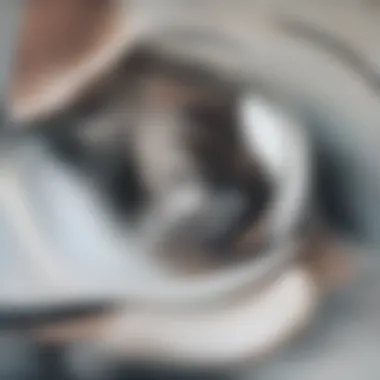
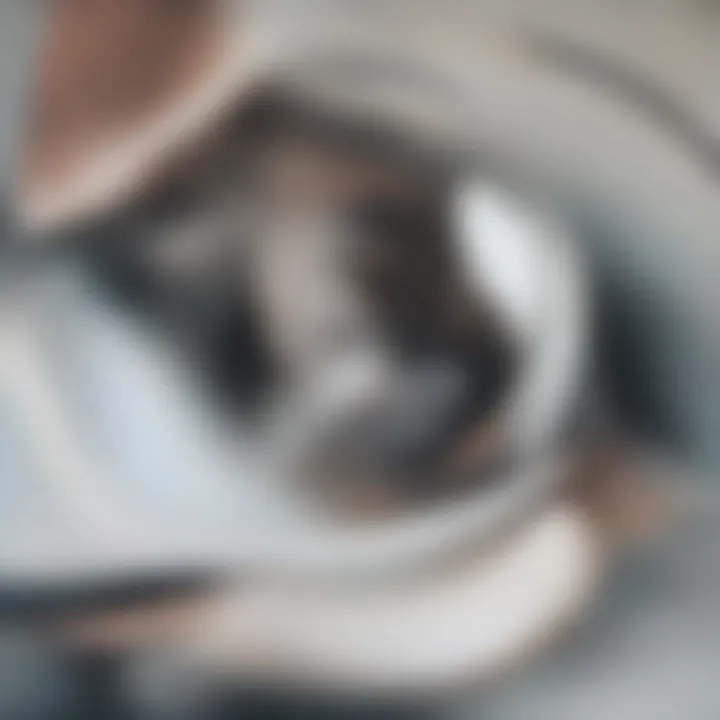
Intro
Cleaning your dryer vent is often overlooked by homeowners, yet its significance cannot be understated. A clogged dryer vent can lead to reduced efficiency and pose serious safety hazards. In this guide, we will explore the importance of maintaining your dryer vent, necessary tools for the cleaning process, and provide a structured approach to ensure a thorough clean from the inside.
Feature Spotlight
Importance of Regular Vent Maintenance
Regular maintenance of your dryer vent is paramount for several reasons. A clean vent promotes optimal airflow, which enhances the efficiency of the appliance. This can result in lower energy bills, as your dryer will require less energy to do its job. Furthermore, neglecting this essential task can lead to lint buildup, increasing the risk of fire hazards. According to the National Fire Protection Association, failure to clean dryer vents is a leading cause of home fires.
Necessary Tools and Equipment
A successful cleanup requires specific tools. The following items are important:
- Vacuum cleaner with hose attachment
- Lint brush or vent cleaning kit
- Screwdriver to remove vent panel
- Flashlight for visibility
- Protective gloves and mask for safety
Having these tools at your disposal will streamline the entire cleaning process.
Step-by-Step Cleaning Guide
Preparation
Before beginning the cleaning process, ensure your dryer is unplugged. This is crucial for safety. Next, gather all necessary tools mentioned above. Begin by moving the dryer away from the wall to access the vent. Ensure that the area is clear to avoid accidents.
Dismantle the Vent
Using the screwdriver, carefully remove the vent panel. If any screws are stubborn, take your time to avoid stripping them. Once the panel is off, you can access the vent pathway.
Cleaning the Interior
Utilize the lint brush to reach deep within the vent. It is essential to remove all lint buildup as it contributes to airflow obstruction. After brushing, use the vacuum cleaner to suck up loose debris. This two-step method ensures a thorough cleaning.
Reassemble and Test
After cleaning, carefully reattach the vent panel. Ensure all screws are tightened properly. Plug the dryer back in and run a short cycle without clothes. Listen for any irregular noises. Simple airflow tests can also indicate if the vent is clear.
Common Issues with Neglected Dryer Vents
Neglecting to clean your dryer vent can lead to a host of problems. Some of the common issues include:
- Longer drying times, which waste energy
- Overheating, risking potential fire hazards
- Odors emanating from the appliance
- Increased wear on the dryer, resulting in costly repairs
Each of these issues highlights the importance of regular maintenance, underscoring the need for proactive care.
The End
This guide serves as a comprehensive resource for cleaning your dryer vent from within. Regular cleaning can vastly improve the performance of your dryer and create a safer environment in your home. Following the outlined steps will ensure you maintain a well-functioning appliance. By understanding the importance of this maintenance task, you empower yourself to take control of your home’s safety and efficiency.
Prelude to Dryer Vent Maintenance
Maintaining the efficiency and safety of your dryer involves understanding dryer vent maintenance. This crucial aspect often gets overlooked, yet its significance cannot be overstated. Dryer vents play a pivotal role in removing heat and moisture produced during the drying process. Failure to maintain these systems can lead to a cascade of issues, affecting both performance and safety.
Understanding the Importance of Dryer Vent Cleaning
Regular cleaning of dryer vents is essential for several reasons. Firstly, it prevents the build-up of lint and debris, which are primary contributors to reduced dryer performance. When lint accumulates, it can obstruct airflow, resulting in longer drying times and increased energy consumption. In essence, clean vents lead to better efficiency, which translates to cost savings on utility bills.
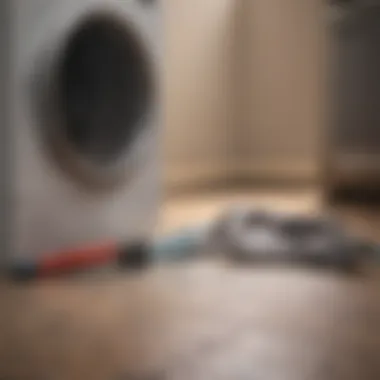
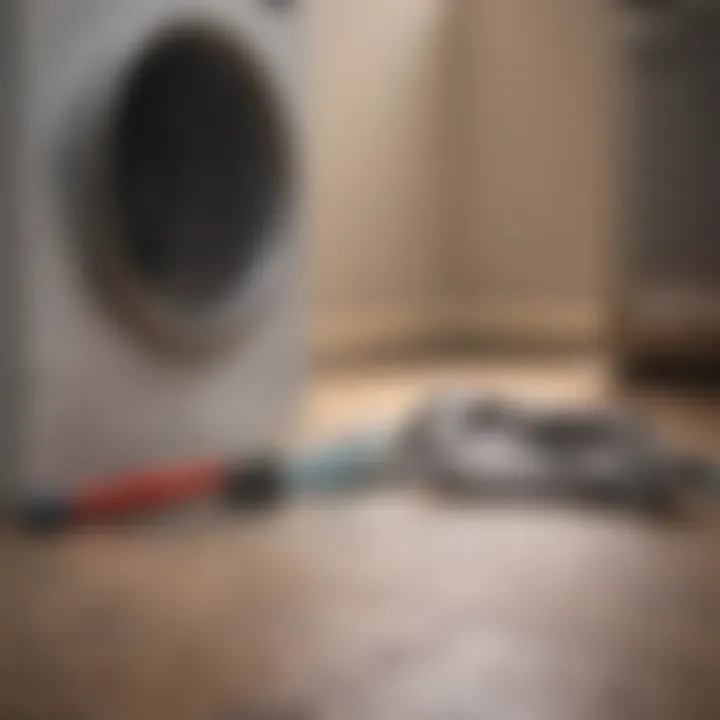
Additionally, maintaining clean dryer vents is vital for safety. Lint is highly flammable, and when it builds up, it poses a significant fire hazard. According to the National Fire Protection Association, failure to clean the dryer is a leading cause of home fires. By prioritizing dryer vent cleaning, homeowners can actively mitigate this risk and foster a safer living environment.
Consequences of Neglecting Dryer Vent Care
Negligence in caring for dryer vents can have serious repercussions. The most immediate consequence is reduced efficiency. As mentioned earlier, blocked vents lead to longer drying times, causing the dryer to work harder. This increased strain can lead to premature wear and tear, necessitating costly repairs or replacements.
Furthermore, the consequences extend beyond just appliance failure. There is the risk of fire, which poses a threat not only to the home but also to its occupants. In addition to the physical damage, there is also the emotional toll associated with losing a home to fire. Homeowners should consider that the small investment in regular maintenance pales in comparison to the devastating effects of neglect.
In summary, understanding the importance of dryer vent maintenance is crucial for every homeowner. It not only improves appliance performance but also significantly enhances safety. Regular cleaning and care should be an integral part of household responsibilities.
The Basics of Dryer Vent Systems
Understanding the basic components and functions of dryer vent systems is essential for anyone involved in maintaining appliances. A dryer vent serves as a pathway for moist air from the dryer to escape outside, which prevents moisture buildup inside the appliance or home. This not only enhances dryer efficiency but also mitigates risks associated with fire hazards.
Components of a Typical Dryer Vent
A typical dryer vent system consists of several key components:
- Dryer: This is the appliance itself, where clothes are dried.
- Vent Pipe: Usually made of aluminum or rigid metal, the vent pipe directs air from the dryer to the outside.
- Exterior Vent Cap: This is the termination point outside the house. It often includes a flap that opens while the dryer is in operation to allow airflow and closes when not in use to prevent pests from entering.
- Lint Trap: Installed within the dryer, this component catches lint before it enters the vent pipe.
- Duct Clamps: These secure the connections between the dryer and the vent pipe, preventing disconnections that could lead to leaks.
Proper installation and regular inspection of these components are crucial. A poorly fitted vent system can accumulate lint and moisture, reducing dryer efficiency and posing safety risks.
How Dryers Emit Heat and Moisture
Dryers expel heat and moisture during their operation to dry clothes effectively. Here's how the process works:
- Heat Generation: Most dryers use electric coils or a gas burner to create heat. This heated air is blown into the drum where wet clothes lie.
- Moisture Absorption: As the drum rotates, the hot air circulates around the clothes, absorbing moisture.
- Exhaust: The warm, moist air needs to exit. This is accomplished through the vent system mentioned earlier. The dryer pushes this air out while simultaneously drawing in new, unheated air.
Failure to maintain this airflow can result in increasingly damp conditions within the dryer, leading to operational inefficiencies and higher energy costs. Regular cleaning of both the lint trap and the vent system helps keep the flow unobstructed, promoting better performance and safety in your home.
Tools Required for Cleaning
Cleaning your dryer vent requires specific tools that can make the process efficient and effective. Using the right tools enhances safety and can significantly reduce the time needed for cleaning. Proper tools also minimize the risk of damage to your dryer or the venting system itself. Thus, understanding which tools are essential is crucial for anyone undertaking this maintenance task.
Essential Cleaning Tools
To adequately clean the dryer vent from the inside, you should have a set of essential tools at hand. Here are the primary tools that are frequently recommended:
- Vacuum Cleaner: A vacuum with a long hose attachment is invaluable. It can effectively remove lint and debris from the vent system. Make sure it has strong suction capabilities.
- Lint Brush: A flexible lint brush is useful for reaching deep into the vent. Its long bristles help in dislodging stubborn lint build-up.
- Duct Cleaning Kit: These kits often include specialized brushes and attachments designed specifically for cleaning dryer vents. They ensure a more thorough cleaning process.
- Screwdriver Set: You may need a screwdriver to detach the dryer vent cover. Having a complete set ensures you can access every part of the vent with ease.
- Flashlight: A flashlight can help illuminate dark areas within the vent system. This visibility is crucial when assessing the level of dirt and blockage.
Having these tools not only makes the job easier but also ensures it is done correctly. Without the right equipment, you may not effectively remove all the lint, which can lead to safety hazards.
Safety Equipment
Safety should never be overlooked during any cleaning process, especially when working with appliances like dryers. The right safety equipment can protect you from potential hazards associated with dryer vent cleaning. Here are some recommended items:
- Safety Goggles: Protect your eyes from dust and debris that may be released during cleaning. Safety goggles are important, especially if you are using a vacuum or pushing tools into the vent.
- Gloves: Wearing durable gloves is essential. They help protect your hands from sharp edges of the vent and will also keep your hands clean while handling lint and debris.
- Mask: A dust mask can be beneficial, particularly if you are sensitive to dust. This protects you from inhaling lint particles and other allergens.
"Safety is paramount when cleaning your dryer vent. Always ensure you are adequately protected to avoid injuries."
In summary, having the correct tools and safety equipment is fundamental when undertaking the task of cleaning your dryer vent from the inside. This preparation allows for an efficient cleaning procedure while safeguarding your health. The combination of the right tools can lead to a safer and more productive cleaning experience.
Preparing for the Cleaning Process
Before embarking on the intricate task of cleaning your dryer vent from the inside, preparation is essential. This stage ensures not only effectiveness but also safety during the cleaning process. Skipping this step can lead to complications later on.
Gathering Necessary Supplies
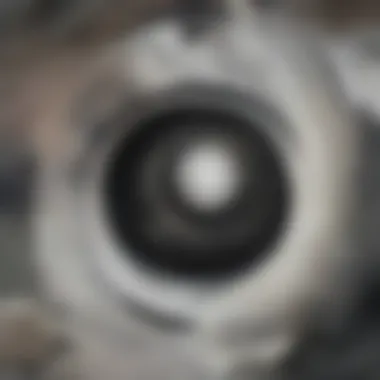

Gathering the right supplies is critical to achieving a thorough cleaning of your dryer vent. A lack of essential tools can impede progress or compromise safety. Here are the key supplies you need:
- Brushes: Use a lint brush or a specialized dryer vent cleaning brush. These are designed to remove lint accumulated in the vent.
- Vacuum Cleaner: Make sure you have a vacuum with a long attachment. This will help in sucking up lint from hard-to-reach areas.
- Flexible Rods: These may be used to extend your reach inside the vent, allowing you to clean deeper areas effectively.
- Safety Gear: A pair of gloves can protect your hands from sharp objects, while a mask will help reduce inhalation of dust and lint.
When gathering your supplies, check the compatibility of tools with the specific design of your dryer vent. Not all dryers or vent systems are the same and having the correct tool can make the difference.
Cutting Power to the Dryer
Safety during the cleaning process cannot be overstated. Cutting power to the dryer is a crucial step. This should always be done before starting any cleaning. Turning off the dryer ensures that there is no risk of accidental operation during cleaning, which can lead to serious injury or damage.
To cut power:
- Unplug the Dryer: Simply disconnect the appliance from the electrical outlet. If your dryer is hardwired, turn off the circuit breaker that controls it.
- Verify It’s Off: After unplugging or switching off the circuit, check to confirm that the dryer is not receiving power. This may mean trying to start the machine briefly or ensuring the display is off.
By taking these precautions, you maintain a safe environment as you work on cleaning your dryer vent.
Accidents often occur due to negligence in preparation. Ensure that all necessary safety measures are addressed before starting the cleaning process.
Step-by-Step Guide to Cleaning the Dryer Vent from Inside
Cleaning your dryer vent from the inside is an essential aspect of maintaining not just the efficiency of your dryer but also the safety of your home. Proper cleaning minimizes the risk of fire, enhances the lifespan of your dryer, and improves energy efficiency. This section will discuss the practical steps to execute this task effectively, ensuring you cover all necessary angles before proceeding. Keeping the dryer vent clean will ultimately contribute to better airflow and prevent overheating.
Accessing the Dryer Vent
Before you can clean a dryer vent properly, you must access it. Start by disconnecting the dryer from the power source. This is a critical safety measure. Next, shuffle the dryer away from the wall to reveal the vent opening connected to the appliance. Some models may require you to unscrew panels or use specific tools to loosen the connections. Be gentle while pulling it away from the wall; you do not want to damage the ductwork or the surrounding area. Once it is free, examine the vent for any visible debris or lint buildup. If the vent is difficult to reach, consider using an extension tool or a vacuum hose to gain better access.
Removing Lint and Debris
Once you have gained access to the vent, the next task is to remove any lint or debris inhibiting airflow. This process begins with a visual inspection. Check for any accumulated lint at the vent opening and along the duct. Use a lint brush or a vacuum with a narrow attachment for this job. Carefully work your way through the entire length of the duct system, applying gentle pressure to avoid damaging the piping. If necessary, you can disconnect sections of the duct for thorough cleaning. Pay special attention to bends and sharp angles in the ductwork, as these areas are typically where lint collects. Regular removal of lint is essential to ensure optimum dryer performance and safety.
Utilizing Specialized Tools for Deep Cleaning
To achieve a deeper clean, consider utilizing specialized tools designed specifically for dryer vent maintenance. Tools such as dryer vent cleaning kits can greatly enhance the effectiveness of your cleaning routine. These kits often include flexible brushes that can reach deep into the duct system, allowing you to access hard-to-reach spots. Always follow the manufacturer's instructions when using these tools. Moreover, a high-powered vacuum can aid in sucking up debris that might have been missed during manual cleaning. Remember, the goal is to create a clear passage for airflow throughout the system. Proper cleaning not only helps in fire prevention but also reduces drying time, thus saving energy.
"Regular dryer vent cleaning is essential for maintaining both efficiency and safety."
By taking these steps, you can ensure that your dryer vent is clean and functional. Comprehensive cleaning from the inside provides benefits that enhance not just your dryer performance but contribute to an overall safer home environment.
Post-Cleaning Procedures
After you have cleaned the dryer vent, it is essential to follow the appropriate post-cleaning procedures. This phase helps ensure that the dryer remains in optimal condition and operates safely. Cleaning is just one part of the process; what you do next can significantly impact your dryer’s functionality and lifespan.
Restoring the Dryer to Its Original State
Once the cleaning is complete, restoring the dryer and its venting system should be done carefully. Start by reconnecting the vent to the dryer, ensuring that it fits securely. It is crucial to check for any signs of damage in the vent materials. If you observe any cracks or tears, it may affect airflow and should be replaced.
Next, move the dryer back into its space cautiously. Avoid straining electrical cords or cutting off any airflow. Verify that the dryer is level; this is essential for efficient operation. Once in place, ensure the vent is free of kinks or blockages. These factors play a role in maintaining safety during operation.
It can also help to clean the dryer’s exterior surfaces. A clean appliance not only looks good but prevents dust buildup from contaminating the vent system again.
Testing the Dryer’s Performance
Testing the dryer’s performance after cleaning is a vital step in confirming that everything is functioning well. Turn the dryer on and set it to a normal cycle. Observe how the dryer operates. Note any unusual noises or vibrations, as they may indicate issues with the vent or the unit itself.
During operation, check for adequate airflow from the vent exhaust outside. You should be able to feel warm air blowing and see lint being discharged if the cleaning was thorough.
Additionally, conduct a test load of laundry. Monitor the drying time. If it takes longer than usual to dry clothes, this might suggest that the vent still has some obstructions or that there are performance issues with the dryer.
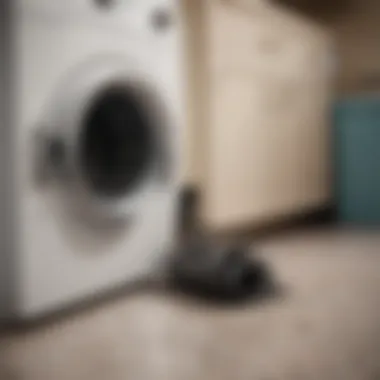
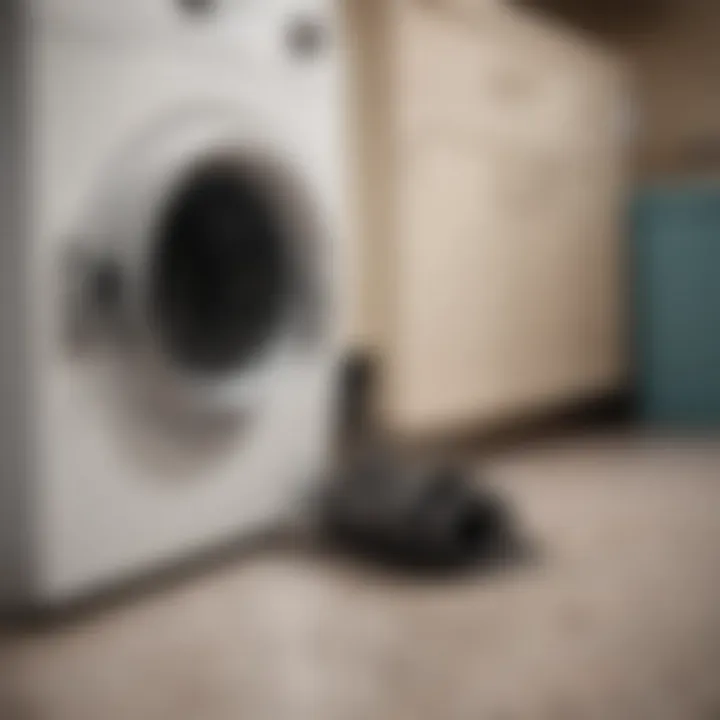
Regular testing of the dryer can indicate when further maintenance is needed. This practice encourages you to catch issues early, which can prevent more significant problems down the line.
In summary, post-cleaning procedures play a critical role in ensuring your dryer functions correctly. Following each step methodically can save you from future headaches related to dryer efficiency and safety. Maintaining both the unit’s exterior and maintaining checks on its operation helps keep a safe home environment.
Routine Maintenance Practices
Maintaining your dryer vent is a practice that should not be overlooked. Regular maintenance is essential for ensuring optimal performance of your dryer while safeguarding your home from potential fire hazards. This section explores the significance of routine maintenance practices, the necessary frequencies for cleaning, and important indicators signaling it's time for another cleaning.
Recommended Cleaning Frequency
How often should you clean your dryer vent? This is a common inquiry. Various factors influence the recommended cleaning frequency for dryer vents. Here are some considerations:
- Usage Level: If your household uses the dryer heavily, cleaning every six months is advisable. A family that often does laundry will accumulate lint more quickly.
- Ventilation Length: Longer vent systems can trap more lint, necessitating more frequent cleanings. If your vent is over 25 feet in length, a quarterly cleaning might be needed.
- Type of Clothing: Washing and drying items like towels or blankets can produce more lint. If your routine often includes those items, a cleaning every three months is smart.
- Manufacturer Recommendations: Always consult the user manual for specific recommendations related to your dryer’s brand.
In summary, a general guideline is to clean your dryer vent every six months to one year, adjusting according to any of the factors mentioned above.
Indicators It’s Time for Another Cleaning
Being attentive to the signs indicating further cleaning can help mitigate risks. Here are notable indicators you should watch for:
- Reduced Drying Efficiency: If clothes are taking longer to dry than usual, it may signal lint buildup in the vent.
- Unpleasant Odors: The presence of lint can lead to unpleasant odors. If you detect a musty smell coming from the dryer, cleaning is necessary.
- Increased Heat: If the dryer exterior feels hot to the touch while running, this indicates poor ventilation due to blockages.
- Visible Lint Around the Vent: If lint escapes the vent area or accumulates outside your home, it requires immediate attention.
- Frequent Overheating: If the dryer frequently shuts off due to overheating, consider checking and cleaning the vent as a possible solution.
Remember, routine maintenance is integral to not just the performance of your dryer but also your home’s safety.
Professional Dryer Vent Cleaning Services
Maintaining a clean dryer vent is crucial for ensuring safety and efficiency. However, despite the importance of this task, many homeowners may not have the time, tools, or skills required to perform a deep clean effectively. This is where professional dryer vent cleaning services come into play. Employing trained experts can save time and potentially prevent dangerous situations caused by neglecting vent maintenance.
Benefits of Professional Cleaning
- Thorough Inspection: Professionals can identify issues that might go unnoticed by the average homeowner, like potential damage or blockages deeper in the system.
- Efficiency: Time is a critical factor. Professionals can complete the job more quickly and efficiently due to their experience and specialized tools.
- Enhanced Safety: A clean dryer vent reduces the risk of fires significantly. Professionals ensure your system is clear of flammable materials, enhancing household safety.
- Improved Performance: A clean dryer operates better. Professionals not only clean but can also offer maintenance tips that may prolong the appliance’s life.
Considerations
While hiring a cleaning service can provide numerous benefits, it’s essential to evaluate the need and timing of calling in the experts. Here are key factors to consider:
- Frequency of vent cleaning: Homes with heavy dryer use might require professional services more often.
- Age of the dryer: Older systems may require specific care or potential upgrades to function effectively.
- Previous issues: If you’ve noticed reduced efficiency or abnormal smells, these are indicators pointing to the necessity of professional cleaning.
"Regular maintenance is not just a convenience; it’s a vital part of household safety and appliance longevity."
When to Call a Professional
It is important to know when to seek help from a professional cleaner. Several indicators suggest that it might be time to involve experts in dryer vent cleaning. Here are a few:
- Increased Drying Time: If clothes take longer than usual to dry, lint buildup may be obstructing airflow.
- Lint Accumulation: If you notice lint appearing in or outside the vent, this is a sign of a blockage.
- Overheating: If your dryer feels hot to the touch, it might be a signal of restricted vent airflow.
- Foul Smells: Any smells coming from the dryer often indicate a blockage or lint accumulation.
How to Choose the Right Service Provider
Selecting a reputable service provider for dryer vent cleaning is essential for ensuring quality and safety. Here are some steps to help you choose wisely:
- Research and Reviews: Investigate local services online. Reviews on platforms like Reddit or Facebook can provide valuable insights from previous customers.
- Certifications and Experience: Look for companies that are certified by recognized organizations. Experience in the field can indicate reliability.
- Verify Insurance: Ensure that the cleaning service carries liability insurance to protect yourself from potential damages during cleaning.
- Cost Estimation: Obtain quotes from different providers. The lowest price is not always the best; instead, focus on the value of service you receive.
- Questions to Ask: Inquire about their methods and equipment used in the cleaning process. Understanding their approach will help you decide if they fit your needs.
By being informed and proactive, you can enhance your dryer’s efficiency and safety with the right professional help.
Culmination
Cleaning your dryer vent from the inside is not just a matter of performance; it is crucial for safety and efficiency. Proper maintenance ensures that your dryer operates at its best, reducing the time for drying cycles and minimizing energy consumption. A clean vent significantly lowers the risk of fire, which can occur when lint accumulates and restricts airflow. Thus, investing time and resources in regular cleaning is of paramount importance.
Summarizing the Key Points
Throughout this article, we have emphasized the essential steps and procedures involved in cleaning your dryer vent effectively. Key points include:
- Understanding the construction and functions of dryer vent systems.
- Identifying the tools necessary for thorough cleaning.
- Following a step-by-step guide that covers all aspects of accessing the vent and removing debris.
- Recognizing indicators that signal when professional cleaning may be required.
By following these guidelines, homeowners can enhance the longevity and efficiency of their dryers.







